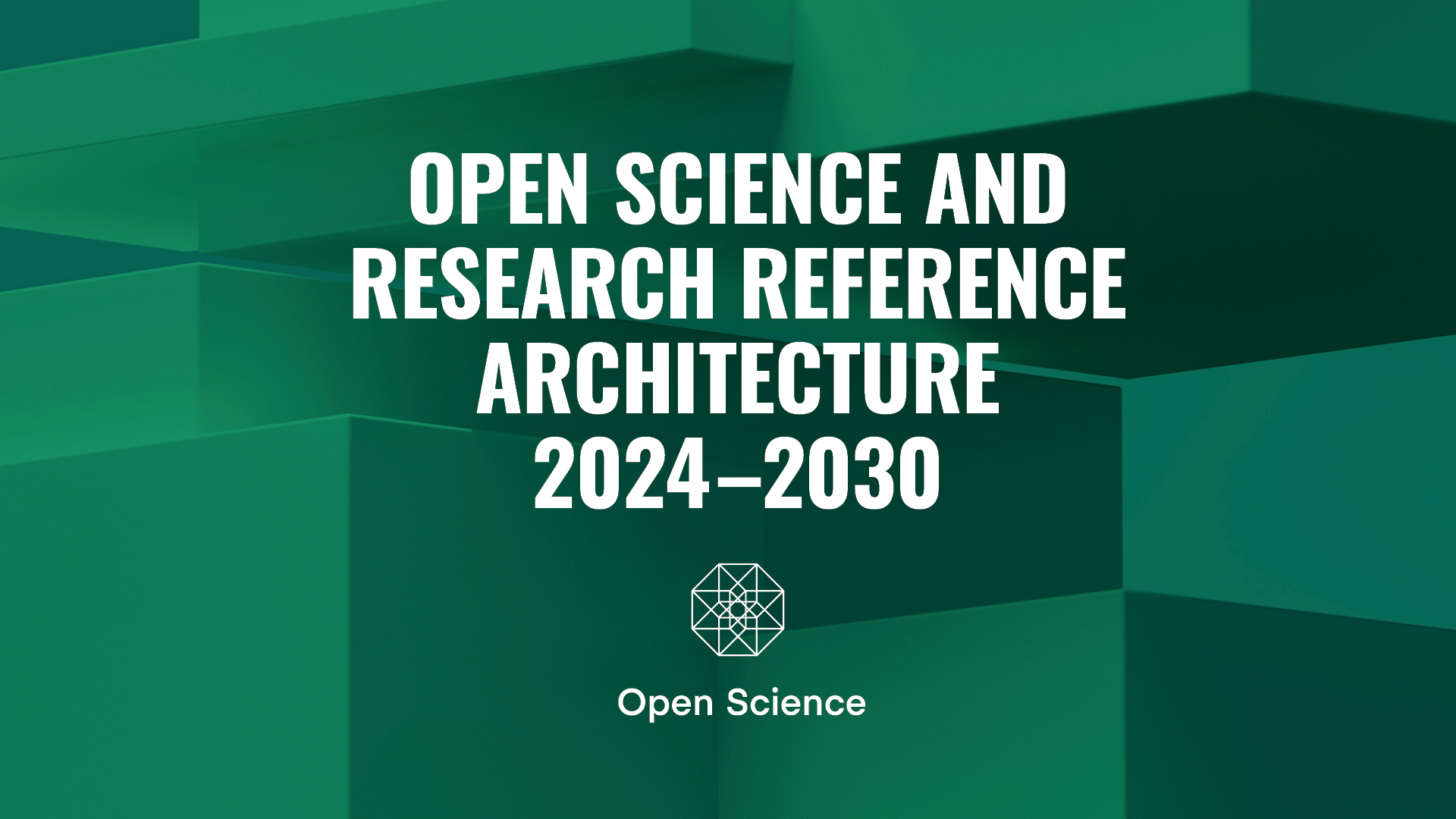
The Open Science and Research Reference Architecture 2024–2030 provides an overview of the national target state for open science and research in 2030 and assesses its current state.
The reference architecture was created by a working group operating under the Finnish Open Science Coordination (AVOTT) in 2021–2023 on the initiative of the National Open Science and Research Steering Group and the Ministry of Education and Culture. The Reference Architecture was accepted in a Steering Group meeting on 13 December 2023.
The reference architecture is based on the Declaration for Open Science and Research 2020–2025, as well as four policies further specifying related goals, objectives, and actions. The declaration and policies form the strategic foundation for the reference architecture. In addition to these, the most relevant international guidelines and national architectures related to the reference architecture have been taken into account.
Reference Architecture in a Nutshell
A summary of the Reference Architecture has been drafted by the AVOTT Secretariat that operates within the Federation of Finnish Learned Societies (TSV). The summary describes the content and use of the reference architecture at a general level and highlights key observations. The summary also contains instructions on how the reference architecture should be utilised.

Summary describes the content and use of the reference architecture at a general level and highlights key observations. Photo: TSV.
The aim of the Reference Architecture
The reference architecture is a recommendatory document. It can serve as a guiding framework for an organisation, its architecture, or development as it provides a shared model and terminology for the planning and implementation work. In addition, the following national actions are proposed:
- Sufficient competence and the necessary training in different areas of open science and research must be guaranteed.
- The resource requirements of open research and education must be systematically taken into account in the funding models.
- The legal and operational interoperability of the research community's organisations must be ensured, and attention must be paid to the necessary legal competence and interoperability of processes at all community levels.
- Artificial intelligence must be considered in the development of open science and research. This involves, among other things, the openness of AI models and responsible utilisation of AI in open science and research.
- The maintenance, utilisation and interoperability of architectural work must be ensured and its international interoperability must be promoted, particularly at the EU level.
Read more
- Journey Planner to Openness? — Open Science and Research Reference Architecture
- Working on Open Science and Research Architecture
Photos: TSV